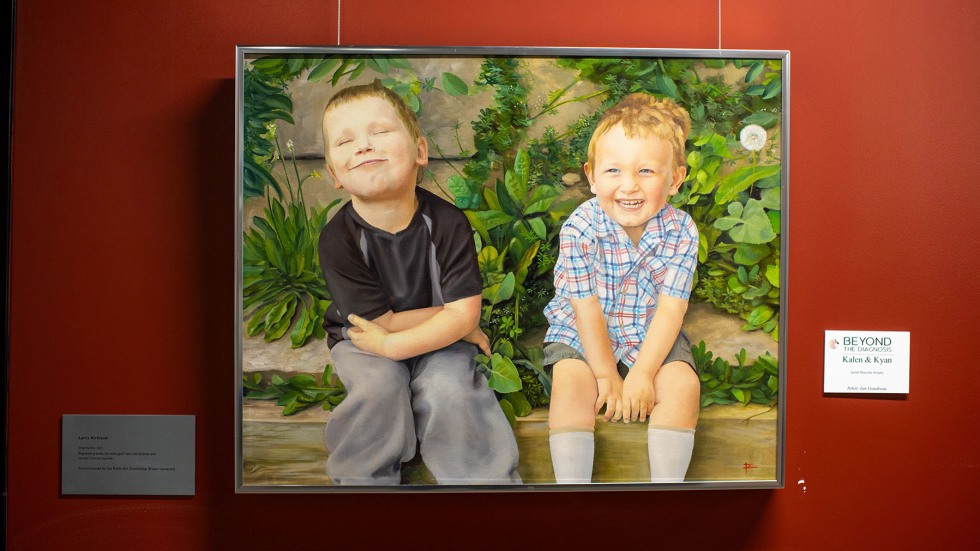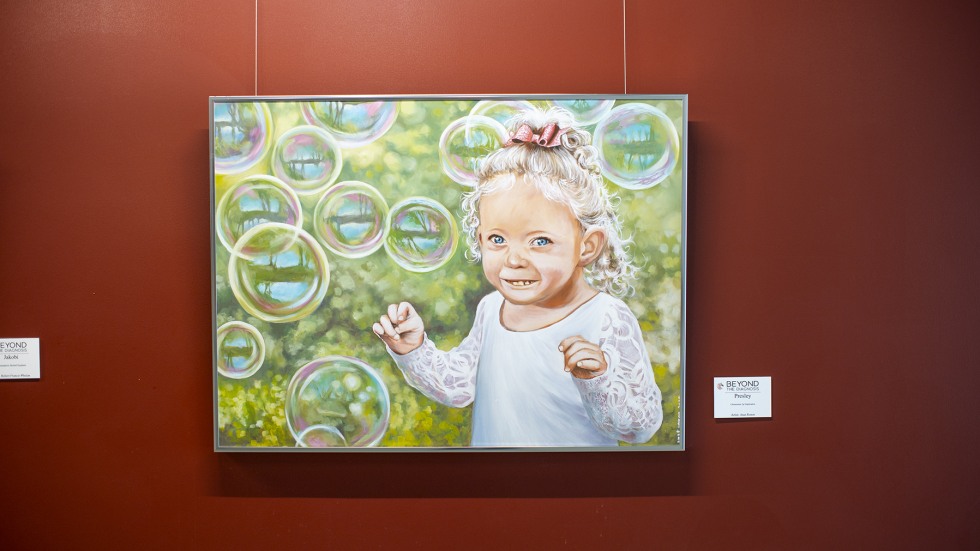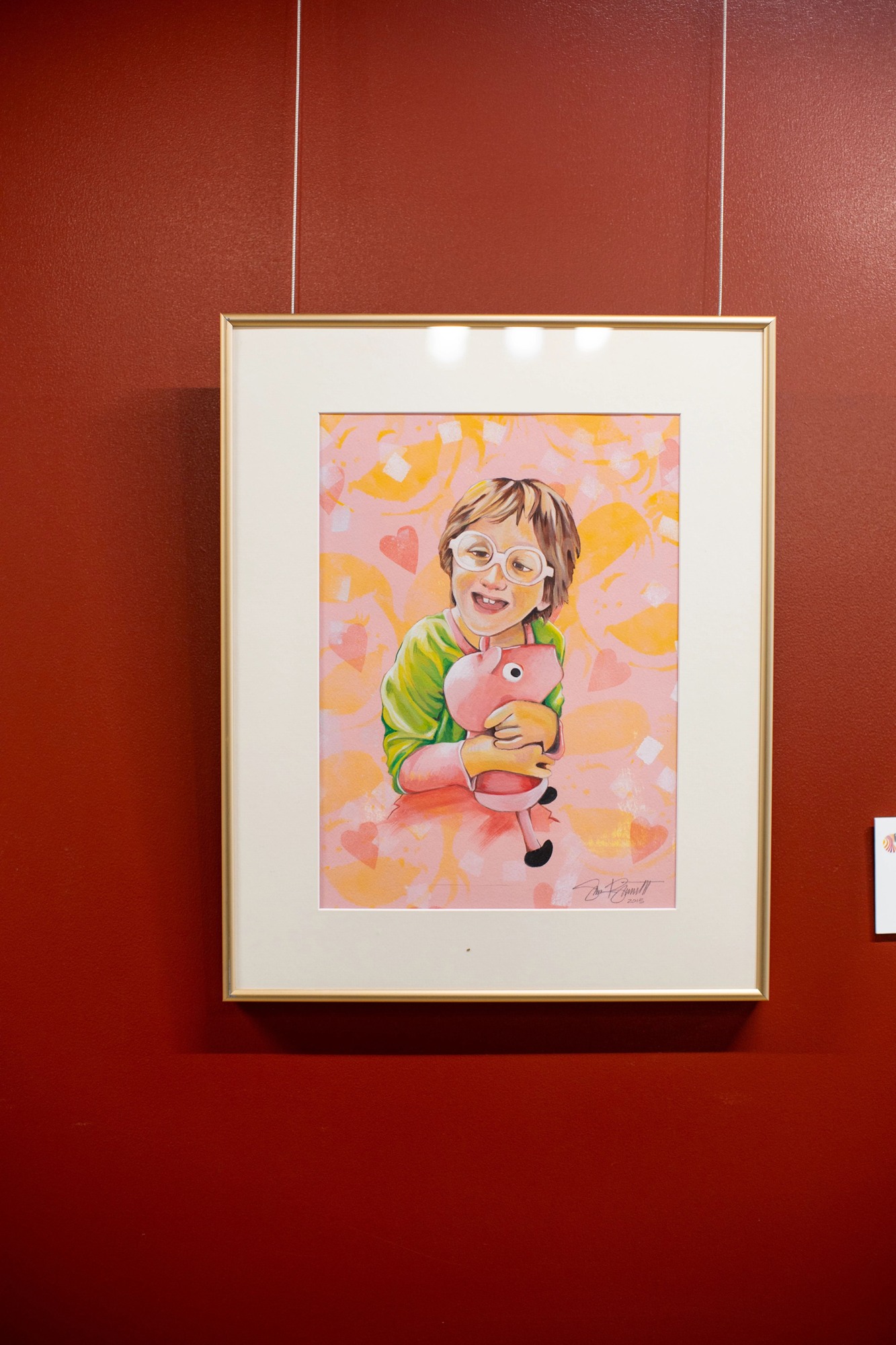PROVIDENCE, R.I. [Brown University] — A green-eyed girl in a flower crown. Two young brothers dressed as Batman and Spider-Man. A self-possessed pre-teen in a leather jacket.
These painted figures, compassionately rendered in oil, acrylic and watercolor, greet visitors to Brown University’s Warren Alpert Medical School, where they are part of a display of portraits of children with rare diseases.
The exhibition, called “Beyond the Diagnosis,” includes 17 portraits of kids ranging in age from infancy to adolescence. Each child is representative of a rare disease — a disorder, disease or condition that affects less than 200,000 people in the United States. The placards accompanying the paintings note the names of the subject, the artist and the disease.
Those clinical terms — such as Lesch-Nyhan syndrome, Jansen type metaphyseal chondrodysplasia, and 2q23.1 microdeletion syndrome — are often unpronounceable and unfamiliar to most non-medical professionals. Physicians-in-training, on the other hand, likely see the conditions as quiz questions, prompting them to rattle off diagnostic criteria and symptoms.
The goal of the exhibit is to change the way all viewers see rare diseases so that they associate the medical terms with real people. This reflects a core tenet of medical education at Brown, said Assistant Dean of Biomedical Communications Kris Cambra.
"At the Warren Alpert Medical School, we have embraced humanism in medicine since our founding,” said Cambra, who is chair of the medical school’s art committee. “We teach our medical students that every interaction should be patient-centered, and to see that patient as a whole person, not just as their disease. That's exactly what ‘Beyond the Diagnosis’ asks its viewers to do: to see the individual and all their hopes and dreams and beauty, not just the rare disease they have. It's a perfect fit for our art program."
To bring the exhibit to the school for Rare Disease Month in February, Cambra and second-year medical student Elyse Sauber collaborated with Beyond the Diagnosis, a nonprofit that unites art and science to raise awareness of rare diseases and inspire research and treatments for children with these conditions.


